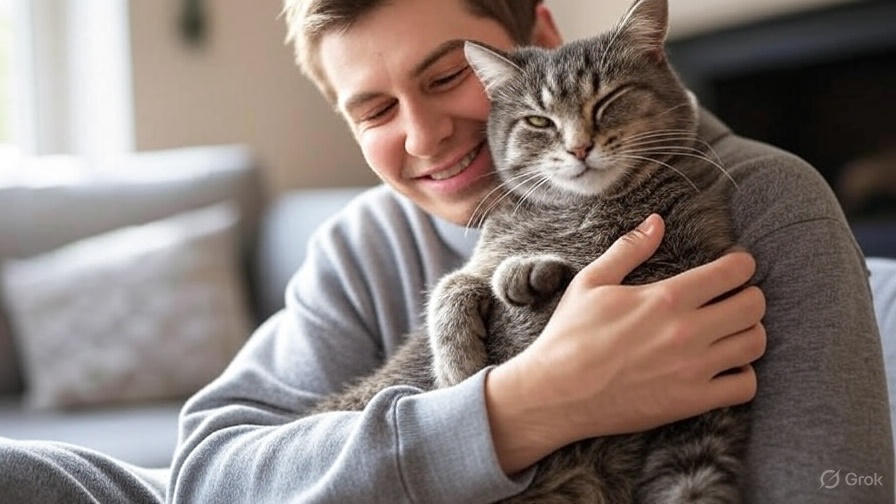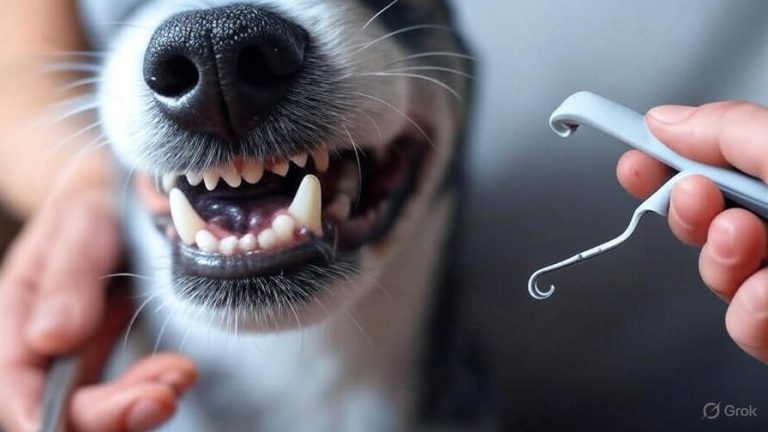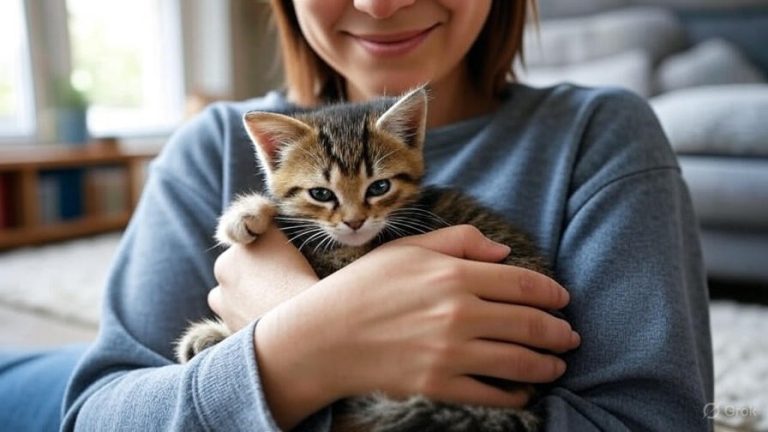How to Entertain Your Cat?
Cats bring joy, companionship, and endless entertainment to our lives. However, keeping these intelligent and curious creatures engaged can sometimes feel like a full-time job. A bored cat often becomes a destructive cat, leading to scratched furniture, midnight zoomies, and attention-seeking behaviors that can drive pet parents to their wit’s end.
The good news is that entertaining your feline friend doesn’t require expensive gadgets or complicated setups. With the right knowledge and creativity, you can transform your home into a cat paradise that keeps your pet mentally stimulated, physically active, and emotionally satisfied.
Why Cat Entertainment Matters
Indoor cats face unique challenges that their outdoor counterparts don’t encounter. Wild cats spend their days hunting, exploring, and navigating complex environments. Domestic cats, particularly indoor-only pets, miss out on these natural behaviors and stimuli.
Boredom in cats manifests in various ways. Your cat might start excessive grooming, leading to bald patches or skin irritation. Some cats become overly vocal, meowing constantly for attention. Others turn to destructive behaviors like clawing furniture, knocking items off counters, or eliminating outside their litter box.
Mental stimulation helps prevent these issues while supporting your cat’s overall well-being. An entertained cat is typically a healthier, happier cat with better eating habits, improved sleep patterns, and stronger bonds with their human family.
Interactive Toys That Drive Cats Wild
Interactive toys serve as excellent tools for engaging your cat’s natural hunting instincts. Puzzle feeders transform mealtime into an exciting challenge, forcing cats to work for their food just like they would in the wild. These feeders come in various difficulty levels, from simple treat-dispensing balls to complex multi-compartment puzzles.
Feather wands remain one of the most effective interactive toys available. The unpredictable movement of feathers mimics bird behavior, triggering your cat’s prey drive. Move the wand in quick, jerky motions, then let it rest to simulate injured prey. This hunting simulation provides excellent physical exercise while satisfying psychological needs.
Laser pointers offer another popular option, but use them correctly to avoid frustration. Always end laser play sessions with a physical toy your cat can catch and “kill.” This closure helps satisfy the hunting sequence and prevents anxiety from never catching the elusive red dot.
Electronic toys have evolved significantly in recent years. Motion-activated mice, robotic birds, and automated fishing rod toys can entertain your cat even when you’re busy. These toys work particularly well for single-cat households where the pet needs extra stimulation.
DIY Entertainment Ideas That Cost Almost Nothing
Creating homemade entertainment for your cat can be both fun and economical. Cardboard boxes transform into endless possibilities – castles, hiding spots, or hunting grounds. Cut holes in different sizes and connect multiple boxes to create a cardboard maze that will keep your cat occupied for hours.
Paper bags (never plastic) make excellent temporary toys. Cats love the crinkly sound and the enclosed space for hiding. Add some catnip or treats inside to make the experience even more appealing. Just remember to remove any handles before giving bags to your cat.
Toilet paper rolls become fantastic puzzle toys when you fold the ends and hide treats inside. Your cat will bat, roll, and tear at the tube to access the goodies. This simple activity provides mental stimulation and satisfies their natural foraging instincts.
Ice cubes in water bowls create an interesting sensory experience. Many cats enjoy batting at floating ice, and it encourages hydration – a bonus for cats who don’t drink enough water. The melting ice provides changing textures and temperatures that intrigue curious felines.
Creating the Perfect Play Environment
Your home environment plays a crucial role in keeping your cat entertained. Vertical space is essential because cats naturally climb and observe from high vantage points. Install cat shelves, provide tall scratching posts, or invest in a multi-level cat tree to satisfy this instinct.
Window perches offer hours of entertainment as your cat watches outdoor activities. Birds, squirrels, and passing cars provide visual stimulation that many cats find fascinating. Consider installing a bird feeder outside your cat’s favorite window to increase the action.
Hiding spots throughout your home create a sense of security and adventure. Cats love small, enclosed spaces where they can retreat and observe. Provide various options like covered beds, cat tunnels, or even open cardboard boxes in different rooms.
Rotating toys prevents boredom and maintains novelty. Instead of leaving all toys available constantly, store some away and swap them weekly. This rotation makes “old” toys feel new again and maintains your cat’s interest longer.
Food-Based Entertainment Strategies
Turning mealtime into playtime provides dual benefits – entertainment and nutrition. Scatter feeding involves spreading kibble around the house, encouraging your cat to hunt for individual pieces. This method slows eating, provides exercise, and satisfies natural foraging behaviors.
Treat-dispensing toys make snack time more engaging. These toys require manipulation to release treats, keeping your cat mentally active while rewarding their efforts. Start with easier toys and gradually increase difficulty as your cat masters each level.
Frozen treats offer cooling entertainment during hot weather. Freeze small amounts of wet food in ice cube trays or create “popsicles” using cat-safe broths. These treats provide sensory stimulation and help with hydration.
Food puzzles challenge your cat’s problem-solving skills. Commercial options range from simple treat balls to complex sliding puzzles. You can also create homemade versions using muffin tins with treats hidden under tennis balls or paper cups.
Technology-Based Entertainment Options
Modern technology offers innovative ways to entertain cats. Tablet apps designed for cats feature moving dots, fish, and mice that respond to paw touches. These apps can provide temporary entertainment, though they shouldn’t replace physical toys and human interaction.
Automated toys have become increasingly sophisticated. Motion-activated toys respond to your cat’s presence, creating unpredictable play experiences. Some models include cameras, allowing you to interact with your cat remotely through smartphone apps.
Pet cameras with two-way audio let you check on and talk to your cat while away. Some models include laser pointers or treat dispensers that you can control remotely. This technology helps reduce separation anxiety and provides mental stimulation during your absence.
Smart feeders can dispense meals at scheduled times, creating anticipation and routine. Some models include puzzle features or voice recordings that play during feeding time, adding an extra layer of engagement to mealtime.
Physical Exercise and Active Play
Physical activity is crucial for maintaining your cat’s health and burning excess energy. Sprint sessions using feather wands or other interactive toys provide excellent cardiovascular exercise. These short bursts of intense activity mirror natural hunting patterns and tire cats effectively.
Climbing structures satisfy your cat’s need for vertical movement. Cat trees, wall shelves, and climbing posts encourage physical activity while providing mental stimulation. Position these structures near windows or in high-traffic areas to maximize their appeal.
Chase games tap into your cat’s hunting instincts. Drag toys across the floor, hide behind furniture, and create “prey” that moves unpredictably. This type of play provides excellent exercise while strengthening your bond with your cat.
Obstacle courses using household items create fun challenges. Set up tunnels with blankets, create jumping platforms with books, or design mazes using furniture. These temporary courses provide mental and physical stimulation while adding variety to your cat’s environment.
Social Engagement and Bonding Activities
Cats are social creatures who benefit from regular interaction with their human companions. Grooming sessions, when your cat enjoys them, provide bonding time while maintaining coat health. Use appropriate brushes and be gentle, especially with sensitive areas.
Training sessions might surprise you with their effectiveness. Cats can learn tricks, respond to their names, and even walk on leashes. Use positive reinforcement with treats and praise to teach new behaviors. Training provides mental stimulation and strengthens your relationship.
Conversation time matters more than you might think. Many cats enjoy when their humans talk to them, often responding with meows, purrs, or head butts. This social interaction helps prevent loneliness and boredom, especially in single-cat households.
Play dates with other cats can provide social stimulation for gregarious felines. However, introduce cats slowly and supervise interactions carefully. Not all cats enjoy feline companionship, so observe your cat’s preferences and comfort level.
Sensory Stimulation Techniques
Cats experience the world through all their senses, and providing varied sensory experiences keeps them engaged. Catnip, while not effective for all cats, can provide temporary euphoria and playfulness. Other cat-safe herbs like valerian root or silver vine might work for cats who don’t respond to catnip.
Texture variety adds interest to your cat’s environment. Provide different surfaces for scratching, walking, and lying on. Carpet samples, sisal mats, cardboard scratchers, and various fabrics create a rich sensory landscape.
Sound stimulation can intrigue many cats. Bird song recordings, nature sounds, or even classical music designed for cats can provide auditory entertainment. Some cats enjoy the sounds of running water, making pet fountains both practical and entertaining.
Scent enrichment involves providing safe, interesting smells. Dried herbs, cat-safe plants, or even your worn clothing can provide olfactory stimulation. Some cats enjoy the smell of certain woods or natural materials.
Creating Seasonal Entertainment
Seasonal changes offer opportunities for fresh entertainment ideas. Spring brings possibilities for safe outdoor exploration through screened porches or supervised balcony time. Window boxes with cat-safe plants provide visual interest and fresh scents.
Summer calls for cooling activities like frozen treats, elevated beds near air conditioning, or shallow water dishes for paw play. Some cats enjoy gentle misting with spray bottles, though test this carefully as many cats dislike water.
Fall brings interesting textures and sounds. Dried leaves in paper bags, small pumpkins to bat around, or autumn-themed toys can provide seasonal engagement. The changing light patterns through windows also offer new visual entertainment.
Winter entertainment focuses on warmth and comfort. Heated beds, sunny window spots, and cozy hiding places become especially appealing. Indoor gardens with cat-safe plants can provide fresh greenery during cold months.
Troubleshooting Common Entertainment Challenges
Some cats seem impossible to entertain, appearing disinterested in toys and activities. These cats might prefer subtler forms of entertainment like watching fish tanks, observing household activities, or simply spending time near their humans. Try different types of stimulation to find what appeals to your particular cat.
Destructive behavior often indicates inadequate entertainment or misdirected energy. Provide appropriate outlets for natural behaviors like scratching posts for clawing, climbing structures for vertical movement, and interactive toys for hunting instincts.
Overweight cats need gentle introduction to physical activities. Start with short play sessions and gradually increase duration. Focus on mental stimulation if physical activity seems challenging, and consult your veterinarian about safe exercise options.
Multiple cats require careful management to prevent resource guarding and competition. Provide multiple toys, feeding stations, and resting areas. Rotate individual attention to ensure each cat receives adequate stimulation and bonding time.
Conclusion
Entertaining your cat doesn’t require expensive equipment or complicated routines. The key lies in variation, consistency, and paying attention to your cat’s individual preferences. Some cats prefer active play, while others enjoy quieter mental challenges. Most cats benefit from a combination of physical exercise, mental stimulation, and social interaction.
Remember that entertainment needs change as cats age. Kittens require different activities than senior cats, and health conditions might affect what types of entertainment are appropriate. Stay flexible and adjust your approach based on your cat’s response and enjoyment.
The time you invest in entertaining your cat pays dividends in their health, happiness, and your mutual bond. A well-entertained cat is typically a well-behaved cat, making your shared life more enjoyable and harmonious. Start with simple activities and gradually build a diverse entertainment program that keeps your feline friend engaged, active, and content.
With patience, creativity, and attention to your cat’s preferences, you can create an enriching environment that satisfies their natural instincts while strengthening your relationship. Your cat will thank you with purrs, headbutts, and the kind of contentment that makes pet ownership so rewarding.







